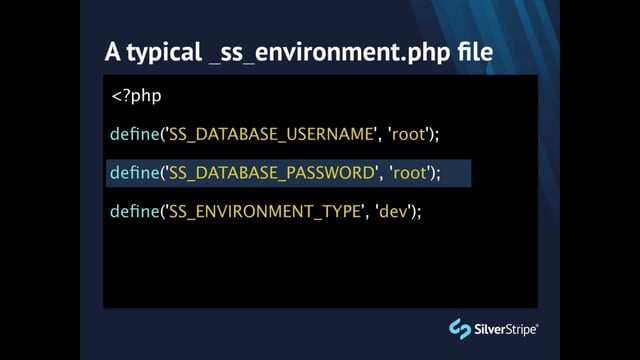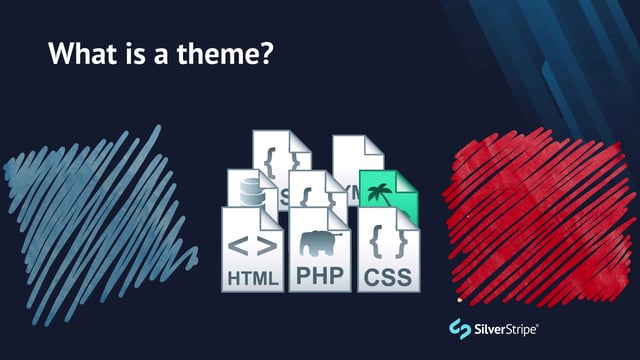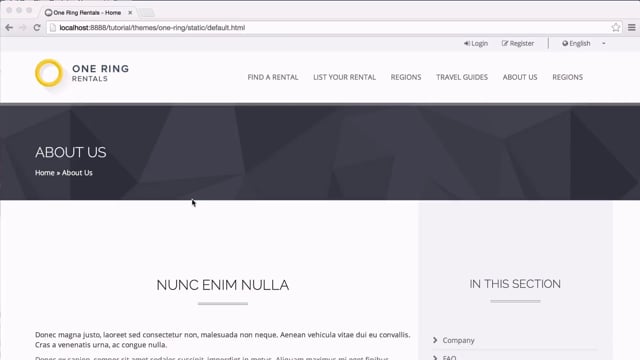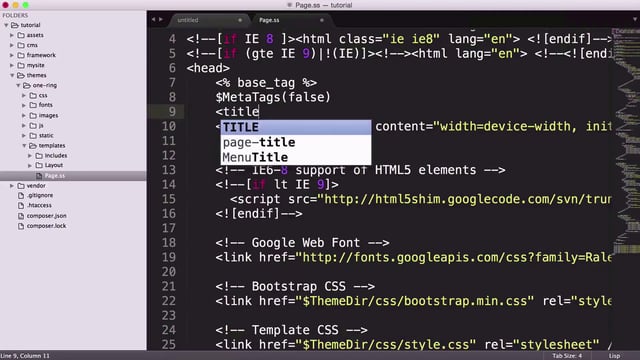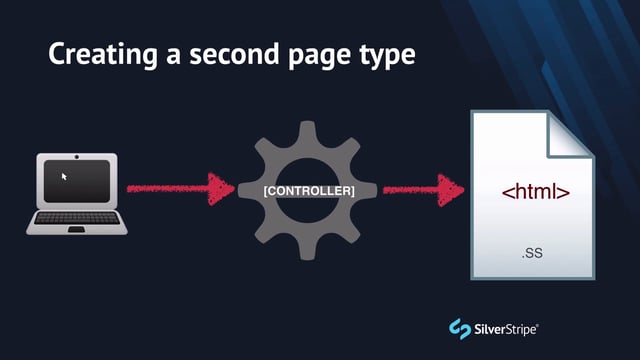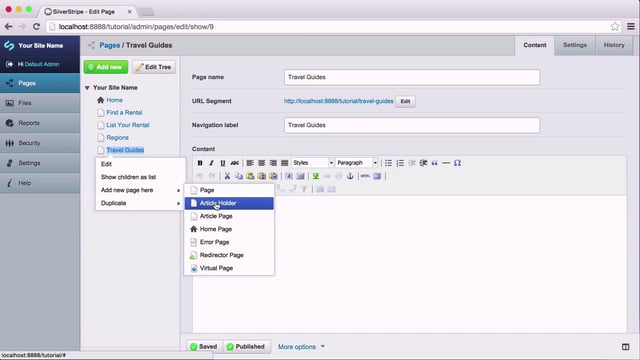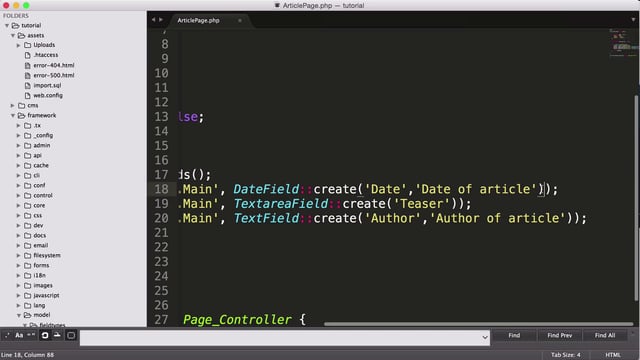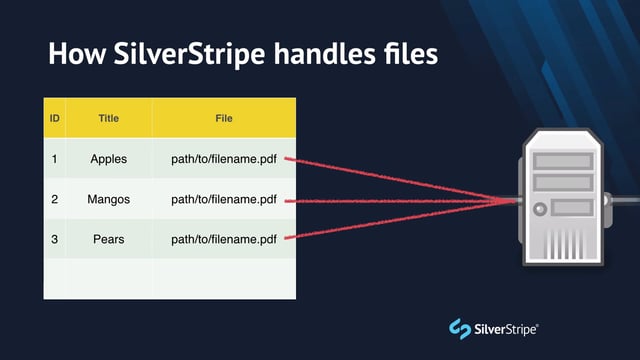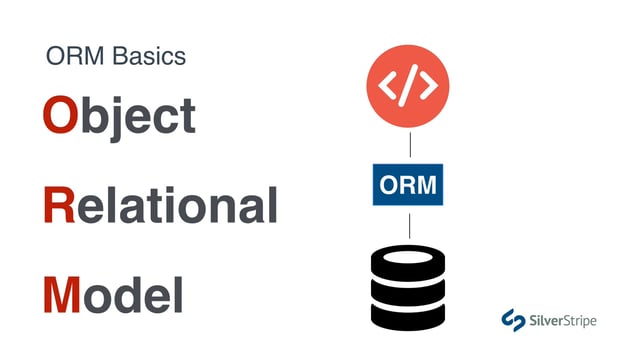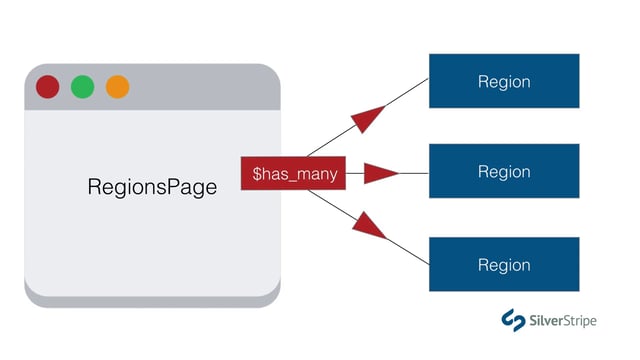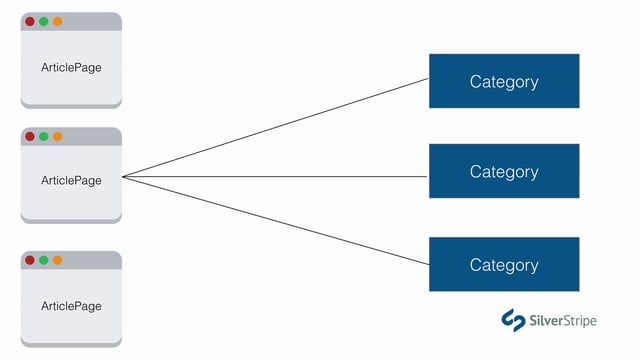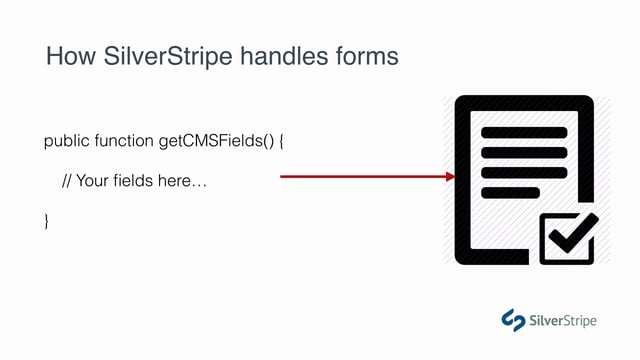Delicious tutorials.
Master SilverStripe, one bite at a time.
-

Step-by-step
One topic at a time
-

Concise
Around 10-15 minutes per video
-

Battle tested
Work on a real life project.
Versions
Introduction to SilverStripe (7 videos)
Get going in just over an hour.
We will be covering:
Prerequisites
You should have a basic working knowledge of object-oriented PHP and MySQL. If you are new to PHP, we recommend Sitepoint.
All tutorials (25 articles)
How to use this guide
What are we building?
These tutorials are published in series, with each lesson demonstrating a new concept in SilverStripe development. To give them context, we have created an imaginary client that we’ll be working for, who needs a custom web application. Their application will allow users to book and list holiday rentals, much like HomeAway or AirBnB, only to give it an element of distinction, all the listings are in Middle Earth. The name of the website is appropriately One Ring Rentals.
Prerequisites
You should have a basic working knowledge of object-oriented PHP and MySQL. If you are new to PHP, we recommend Sitepoint. Since the project assumes that a designer has already done all of our HTML and CSS, there will be very little, if any, frontend work.
The format
Each lesson includes a screencast and a written tutorial. They follow each other very closely, and in general, share all the same information. Lessons will be published at a rate of roughly one per week, and will move through the project in a linear fashion, putting most of the advanced topics further down the track.
Getting the source code
The source code is hosted on Github in a public repository.
Each lesson points to a commit in the source code repository, tagged with the lesson name, formatted as ‘lesson-x’, where “x” is the number of the lesson. For example, to see the final result of lesson 5, you can use git checkout lesson-5. Keep in mind, the tags are assigned at the conclusion of the lesson, so to follow along and do the work on your own, you should check out the previous lesson.
Getting the database and assets
With the exception of the early lessons, each lesson contains a ZIP file download of the database, uploaded assets, and any other materials you may need. All database clients, such as PHPMyAdmin, Navicat, and Sequel Pro allow you to import SQL scripts very easily. You can also run the script from the command line, using
mysql -u [user] -p[password] [database_name] < import.sqlGetting support
The SilverStripe Community Slack channel, the SilverStripe Forum, and Stack Overflow (tagged SilverStripe or SilverStripe 4) should be your first point of call for any questions you may have. For more information about the various ways of connecting with the SilverStripe community refer to our Contributing guides.
Translations
In the future, we plan to add subtitles to the screencasts, but for now, non-English speakers should translate the written version of the tutorials to follow along.

